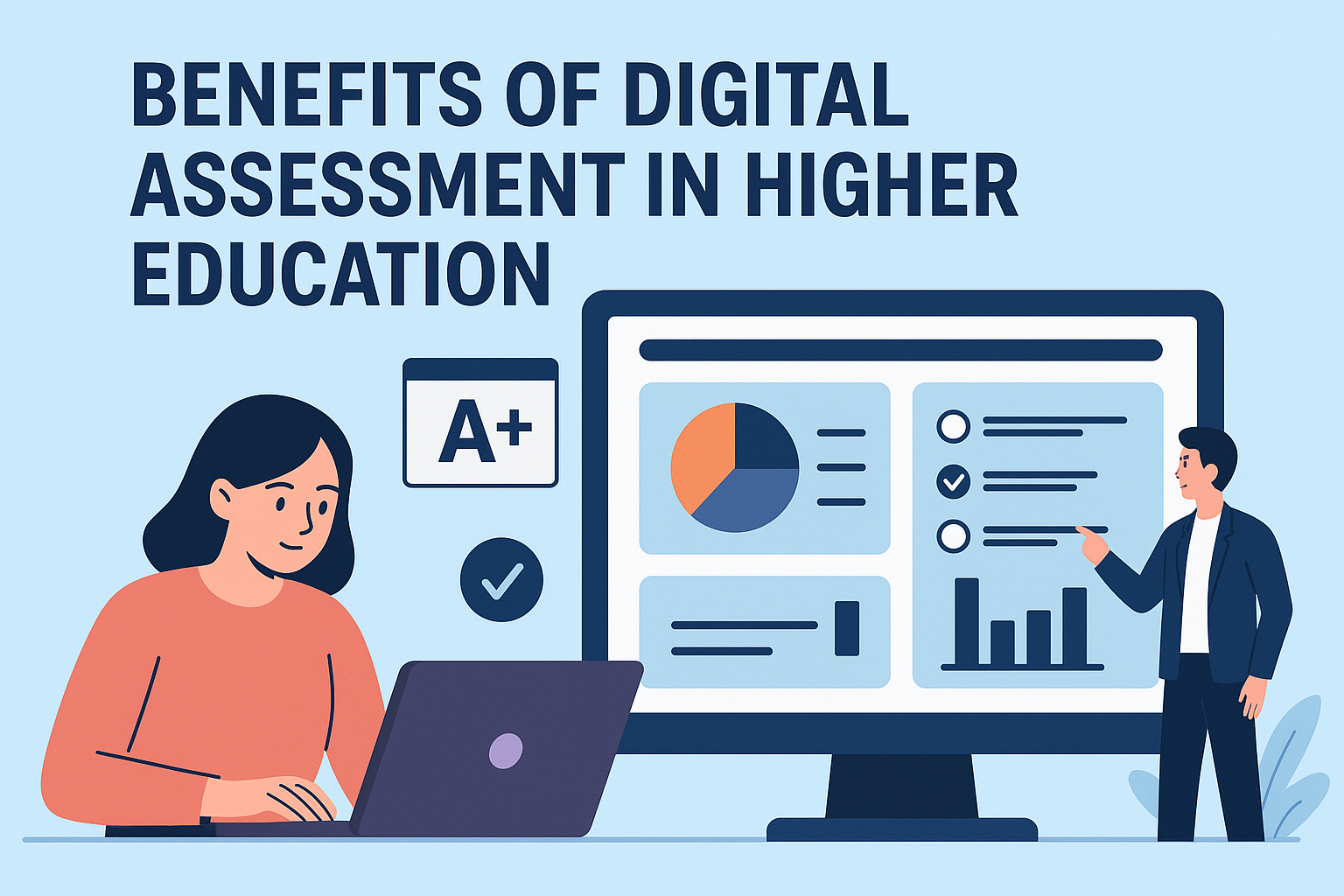Higher education is undergoing a digital transformation, and nowhere is this shift more apparent, or more beneficial, than in the way institutions assess learning. Traditional pen-and-paper exams are being replaced by digital assessment models that not only streamline the testing process but also enhance the overall quality of teaching and learning. This shift is not merely technological—it represents a fundamental improvement in the way education is delivered, measured, and experienced.
Improved Accessibility and Inclusivity
Digital assessment models make exams more accessible by removing restrictions of time and place. Students can complete assessments remotely, which is especially valuable for distance learners, international cohorts, and those balancing study with work or other commitments.
These platforms also include built-in accessibility tools such as screen readers, adjustable fonts, and extended time options, ensuring fair participation for students with diverse needs. By adopting a reliable exam platform for higher education organisations, institutions can prioritise inclusivity while meeting legal and ethical standards in education.
Enhanced Academic Integrity
Maintaining academic integrity is a critical concern in higher education. Advanced digital assessment models come equipped with proctoring technologies such as webcam monitoring, facial recognition, and browser lockdown tools that help deter cheating.
AI-driven analytics can detect unusual patterns in student behaviour or answer patterns, enabling targeted review by human invigilators. These features instil confidence in the credibility of results—essential for both internal quality assurance and external accreditation.
Real-Time Feedback and Data Insights
Traditional assessments often delay feedback, which can hinder learning. Digital platforms, by contrast, deliver immediate, automated responses that help students reflect while the material is still fresh. In fact, a systematic review found that 65.07% of studies demonstrate that automatic feedback significantly improves student performance in activities.
In addition, digital assessments generate rich data sets that offer granular insights into student performance, question difficulty, and cohort trends. Educators can use this information to refine teaching strategies, adjust curricula, and offer targeted academic support, making teaching more responsive and data-driven.
Increased Efficiency and Cost Reduction
Paper-based assessments are notoriously resource-intensive. Printing, distributing, invigilating, and manually marking exams demand significant time and money. Digital assessment models reduce or eliminate many of these logistical burdens.
Automated features such as online exam scheduling, real-time proctoring, and machine marking free up academic and administrative staff to focus on more strategic tasks. In turn, institutions benefit from lower operational costs and faster turnaround times for marking and feedback, significantly improving the student experience.
Scalability and Adaptability
As universities expand their student intake and offer a wider range of course formats, including hybrid and online programmes, scalable assessment methods become vital. Digital assessment platforms are inherently scalable, supporting large cohorts and multiple exam sittings without requiring proportional increases in staff or resources.
Furthermore, digital models adapt easily to different types of assessment, including formative quizzes, summative exams, open-book tests, and even portfolio assessments. This flexibility supports diverse pedagogical approaches and empowers departments to innovate their evaluation methods.
Business Continuity and Resilience
The COVID-19 pandemic highlighted the vulnerability of traditional assessment methods. Institutions that relied solely on in-person exams faced disruption, delays, and in some cases, cancellations. Digital assessment models, however, proved resilient.
By enabling remote delivery and rapid reconfiguration, these systems ensure academic continuity even in emergencies. They allow institutions to uphold academic standards regardless of external disruptions, safeguarding both student progression and institutional reputation.
Redefining Exams for a Digital Era
Digital assessment models are not simply a digital replica of paper-based exams—they are a step-change in how higher education institutions assess, understand and support student learning. From improving accessibility and reducing costs to enhancing academic integrity and enabling data-driven insights, the benefits are both immediate and long-term. For institutions committed to educational excellence in a digital age, adopting these models is an investment in resilience, relevance, and student success.

Leave A Comment